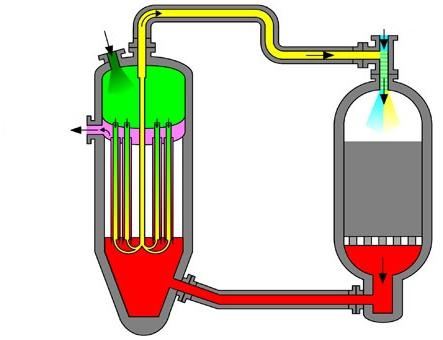Not all countries are rich in natural resources. And if the absence of our own gold mines or diamond mines can simply be frustrating, then the presence of hydrocarbon deposits often becomes a question of the viability of the state, especially in the war period. Germany gained vast experience in the production of ersatz (substitutes) in the first half of the twentieth century.

Already in 1915, German submarines put Britain in an extremely difficult position, preventing the supply of "blood of war" to the islands. During the Second World War, Germany was in no less difficult condition, especially after the loss of the Romanian oil fields. It seemed a little more, and surrender was inevitable. Tanks, planes, ships and submarines will not be able to take part in hostilities, there will be nothing to refuel them, however, the war continued for many long months. Coal, which was mined a lot in the Reich, turned out to be a suitable raw material for the production of synthetic hydrocarbons, the main of which was synthesis gas.
Brilliantly trained and talented German scientists, long before the war, began to develop this issue. Franz Fischer, who headed the Kaiser Wilhelm Institute, published a scientific work in 1926 on the direct synthesis of hydrocarbons at atmospheric pressure, not only proving such a possibility, but also substantiating its technological availability. The synthesis gas was obtained as a result of a hydrogen reducing reaction of CO in the presence of catalytic substances, such as a mixture of zinc oxide with iron or chromium oxide with cobalt, which takes place at a temperature of 270 degrees Celsius. Such a process made it possible to obtain gaseous, liquid, and solid methane homologues.
On shots of the chronicles of the war, you can sometimes see a gas car running on ... wood. Yes, the generator supplying the engine with a combustible mixture was relatively compact, and in order to set the machine in motion, it was enough to take an ax and go to the nearest forest.
The chemical compound of carbon monoxide and hydrogen molecules H2, that is, synthesis gas, can be carried out not only from coal, but also from any carbon-containing feedstock. The process is called the Fischer-Tropsch synthesis, according to the names of the inventors. At the time of its publication, there were other methods for producing fossil fuels from coal, bypassing synthesis gas. In the same Germany, Bergius received gasoline from coal in 1911, but the process technology was incomparably more complicated.
Like earlier work, this achievement was the result of solving the problem faced by industrially and militarily developed countries that did not have access to natural hydrocarbons.
In the postwar years, the production of synthesis gas temporarily lost its relevance. Interest in this technology resumed in the early seventies of the twentieth century, when the so-called “oil crisis” arose, which was the result of a coordinated increase in oil prices by OPEC countries.
Without a doubt, the experience of producing hydrocarbons from raw materials will become more and more in demand as natural resources, especially oil and gas, are depleted, the importance of which as a raw material for the chemical industry is still underestimated. Once D.I. Mendeleev compared their use as energy sources with the burning of bank notes.